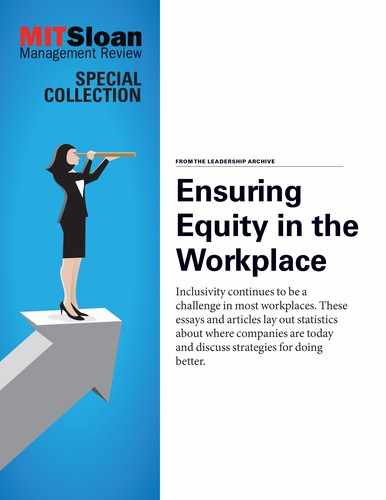Diversity, inclusivity, and gender parity continue to be challenges in most workplaces. These essays and articles from MIT Sloan Management Review lay out statistics about where companies are today and discuss strategies for doing better.
From “Why the Influence of Women on Boards Still Lags”:
- Many executives say that having women as directors improves performance, citing the fact that women may have broader experiences to draw on and are often willing to suspend judgment and find a better “third way.”
- But while the representation of women on corporate boards has risen over the past decade — the average Fortune 500 executive board is now made up of nine men and two women —the growth rate is slowing.
- Moreover, the power that women wield on the boards on which they sit is often limited. Very few have been promoted to posts that would give them influence beyond their seat at the table.
- “There are three layers of progress for women,” says former Xerox CEO Anne Mulcahy: breaking into boards, getting to critical mass, and then getting into leadership positions “where the real power resides.”
From “Rationalizing Yourself Out of a Promotion”:
- Many people default toward thinking of all of the ways they are not a good fit for a promotion or a new job.
- Studies are looking at why and how women, in particular, engage in rationalization processes to talk themselves out of jobs — especially ones with leadership responsibilities.
- For some women, a perception that the new position isn’t a good fit for them, combined with an expectation that they won’t be satisfied with the promotion, creates a sense of threat that prompts them to focus on why they would be unhappy in the position.
- Much of that perception comes from the language used in job descriptions, which can be either “agentic” or communal. A job posting written in an agentic tone might use a phrase such as “challenge others,” whereas a posting that used communal language might use the word “motivate” instead.
From “Could AI Be the Cure for Workplace Gender Inequality?”:
- Artificial intelligence is beginning to replace many of the workplace roles that men dominate. The parts of those jobs that will have staying power are those that rely more heavily on emotional intelligence — requiring skills in which women typically excel.
- To adapt and prosper, workers of tomorrow need to invest in “human relating” skills — empathy, compassion, and engagement, known as emotional quotient (EQ) skills.
- Organizations need to be aware of this shift in job skills, because it will affect the hiring, managing, and training of employees.
- Any person’s EQ can be improved with some effort. The authors offer three steps to get started.
From “It’s Time to Make Paternity Leave Work”:
- Research shows that many people alive today will live to be 100. That means they could have 60-year working lives.
- As we begin to live longer, we will have to undo the model of a typical lifetime that we learned from our parents and grandparents: a period of full-time education followed by full-time work and then full-time retirement.
- Embracing a new lifetime model means being prepared to redistribute the stages of life and use time in new ways. That could mean learning new skills when you’re in your 40s, or taking some of the nonworking years traditionally assigned to retirement and using them to spend time with your children when you’re younger.
- Companies must review their parental leave policies to make it easier and more acceptable for fathers to take time off to raise their children.
From “Bringing Lessons From #MeToo to the Boardroom”:
- Corporate boards need to be proactive in shaping organizational cultures that do not tolerate sexual harassment.
- The first step is for directors to implore their board chair to put this topic on the board’s agenda.
- Seven questions can guide the conversation. They include “How do our current policies measure up to best practices?” and “What is company culture like for midlevel employees?”
- Board members should ensure that the boards they serve on are connecting the dots between board governance, board culture, and company culture. They should then empower the CEO and the executive leadership team to set high standards for all employees.
..................Content has been hidden....................
You can't read the all page of ebook, please click here login for view all page.
